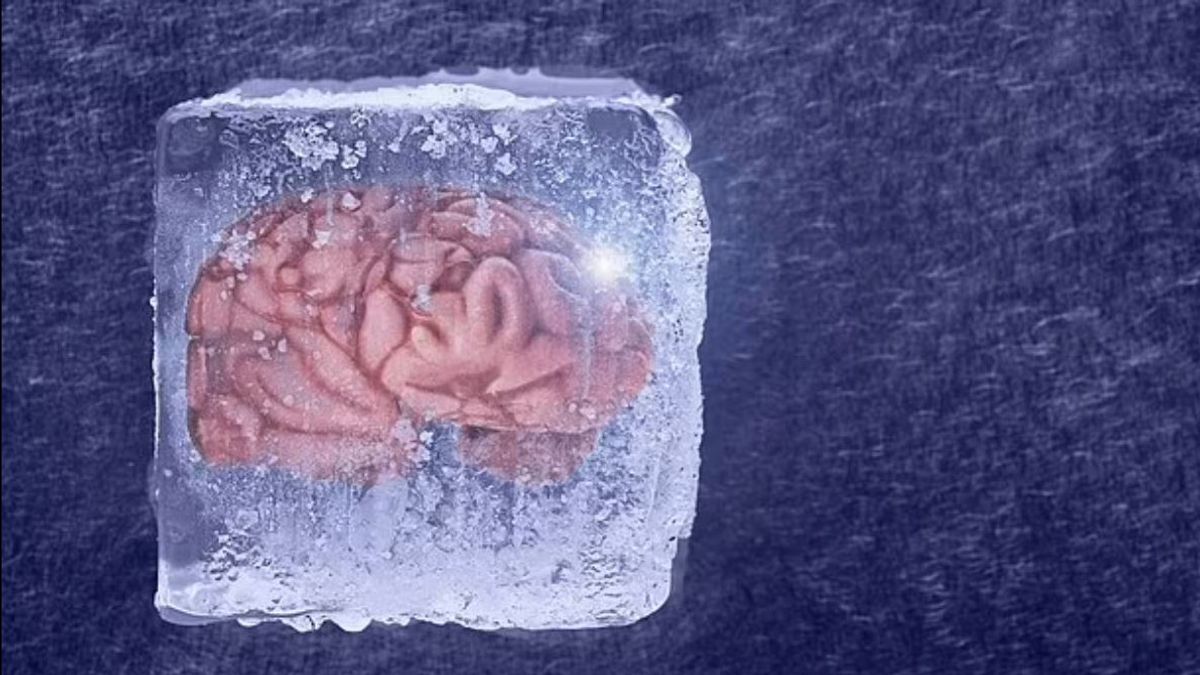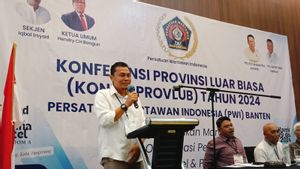JAKARTA - Scientists have reached advanced steps in an effort to preserve the human brain forever. They managed to disburse a cryogenically frozen brain tissue without destroying it, and frozen neurons were still able to send signals as usual.
This is a big challenge for science, as very fine brain clots usually damage it, making it useless when disbursed. This breakthrough is not only important for neuroscientists who want to learn new drugs, but can also advance science fiction ideas to revive people in the future.
Peter Thiel, the billionaire founder of PayPal, stated in an interview in 2023 that he wanted to be frozen after death, although he didn't "always expect this to work." Many celebrities, including legendary DJ Steve Aoki, also hope to freeze their bodies after death.
The longest patient at the Cryonics Institute, Rhea Ettinger, has been kept since 1977. The number of people stored in the institute in Michigan has more than tripled since 2006.
Professor Zhicheng Shao, a neurologist trained at Harvard and works at Fudan University in Shanghai, developing a complex chemical mixture called MEDY that protects neurons from freezing. He did not shy away from the idea that this research could be used for cryogenics, which has been a fantasy among futurists for decades.
"MEDY can be used for cryogenic preservation of human brain tissue," said Dr. Shao in his study published in the journal Cell Reports Methods.
This is good news for many, such as Peter Thiel and Steve Aoki, who hope their bodies can be preserved in ice after they die, in the hope that in the future, science will progress enough to revive them in good health.
SEE ALSO:
However, as Thiel acknowledged in an interview in 2023, we don't yet know how to make the criteria work - both for the body as a whole and brain in particular. However, this doesn't stop businesses from taking advantage of the trend. Since the middle of the 20th century, cryogenic laboratories have sprung up in Michigan, Arizona, and Australia.
At the Michigan-based Cryonics Lab, full body privacy started at a cost of $28,000 (Rp451 million), and their clients have more than tripled since 2006, now having more than 1,975 permanent residents.
To solve this problem, Professor Shao and his team are looking for different substances to submerge brain tissues that keep the tissue cool without causing problems with ice crystals. They found a mixture called MEDY, which allowed them to freeze the tissue without damage. Once disbursed, the brain tissue resurfaced and was able to function normally.
Even so, there are still many challenges that must be overcome before we can apply this technique to the brain or human body as a whole. This research also has great potential for testing new drugs and therapy in laboratories.
While we are still far from understanding the entire brain work system, this step is a significant progress in the field of cryogenics and neuroscience.
The English, Chinese, Japanese, Arabic, and French versions are automatically generated by the AI. So there may still be inaccuracies in translating, please always see Indonesian as our main language. (system supported by DigitalSiber.id)













